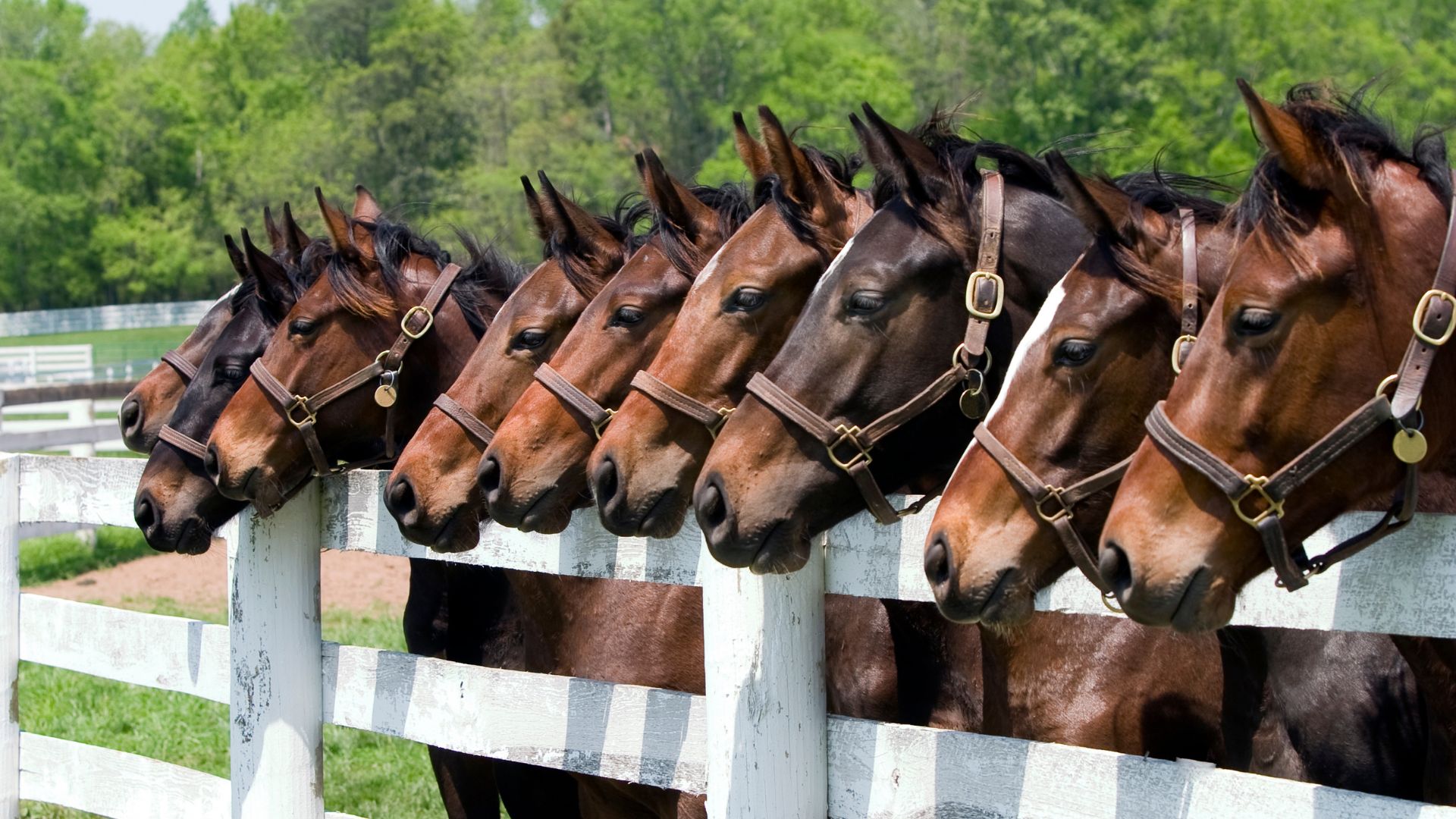
Laminitis, a painful and potentially deadly disease for many horses, is something that you as a horse owner want to avoid at all costs. After all, about 5% of equine laminitis cases result in death. What’s more, is that over 7% of horse deaths are related to laminitis. That’s why this article is dedicated to bringing awareness to 7 symptoms of laminitis in horses, including lameness, increased digital pulse rate, etc. Understanding the symptoms of laminitis in horses is key to understanding how to prevent this dangerous and deadly disease. We’ll first give a basic overview of what laminitis is, explain several laminitis causes in horses, and show you how to help prevent it from happening to your four-footed friend.
What Is Laminitis?
Laminitis is essentially a condition in which the laminae (tissue) fails between the pedal (coffin) bone and hoof wall of a horse’s foot; as a result, the pedal bone rotates or sinks, causing foot soreness, possible penetration of the pedal bone to the sole, or even death. Lack of blood flow can be a major reason why the laminae bond between the pedal bone and hoof fall becomes weaker and eventually breaks.
What Are 7 Symptoms Of Laminitis in Horses?
Seven symptoms of laminitis in horses include lameness, an increased digital pulse rate, constant shifts in posture, hot hoofs, a change in the color or appearance of the sole on a horse’s foot, a ridge change on a horse’s hoofs, and/or an unwillingness to walk. We’ll break each of these down in more detail.
#1: Lameness
One of the most common signs of laminitis in horses is a limp or lameness. A way to see this limp is by observing when your horse makes sharp, hard turns.
#2: Increased Digital Pulse Rate
Typically, the digital pulse rate of a horse is hardly perceptible. However, in the case of laminitis, the digital pulse rate of a horse will increase due to that lack of blood flow (which we talked about earlier is a cause of the bond break between the hoof wall and the laminae tissue). Therefore, the digital pulse rate becomes stronger. For these reasons, an increased digital pulse rate (or a digital pulse rate that can be felt) is a strong symptom of laminitis.
How To Check Digital Pulse Rate
You might be wondering: ok, I agree that an increased digital pulse rate is a strong sign of laminitis in a horse’s hoof but how do I check that pulse rate? The digital pulse rate is typically felt in the fetlock or pastern area. Here’s how you can check a horse’s digital pulse rate:
1) Run your two fingers down the grooves in a horse’s leg where the tendons are.
2) When your fingers hit a “squishy” spot in the tendons is when you’ve reached the digital artery.
3) At that “squishy” spot, press down firmly to feel the digital pulse rate. No pulse will be felt if you press too firmly or if you press too lightly.
4) If you feel a strong digital pulse rate, consider taking your horse to an equine veterinarian for a diagnosis.
Here’s a video that explains how to find your horse’s digital pulse.
#3: Shift in Posture
A horse who is experiencing laminitis is often uncomfortable and in a lot of pain. Therefore, a shift in posture is often a sign of laminitis in horses. In an attempt to ease the discomfort, horses will often shift their weight around, such as shifting their weight to their hindlegs in an attempt to relieve the weight on their front legs (typically laminitis occurs in the front two legs).
Often, a horse will tuck their hind legs underneath them as much as possible, which keeps more weight on their hind legs rather than on their front legs.
#4: Hot Hoofs
Another common symptom of laminitis in horses is horse hoofs that are warm or hot for an extended period of time. As we mentioned before, a horse experiences a lot of pain from laminitis. As a result of the pain, there’s an increased blood flow to the hoof, which results in a warm or hot hoof.
#5: Sole Injury
Another way to check for symptoms of laminitis in horses is to check the white line on a horse’s sole. If it is bloody or damaged, your horse may be experiencing laminitis symptoms. Also, there may be a widening between the toe and the white line.
#6: Hoof Ring Change
Yet another telltale sign of laminitis in horses is a ring change in the hoofs of horses. Horse rings are visible ridges that can occur from seasonal diet changes on the horse’s hoof. Typically, when laminitis occurs, the growth rings on a horse’s hoof grow in the wrong direction.
Normally, a horse’s growth rings will be narrower at the heel and wider at the toe. However, when a horse is experiencing laminitis symptoms, the reverse will occur: the growth rings are wider at the heel and narrower at the toe.
#7: Unwillingness to Walk
Finally, horses with laminitis just want to lie down and rest since standing puts pressure (and therefore pain) on their hooves. This is exemplified by horses lying down for long periods of time at unusual times during the day.
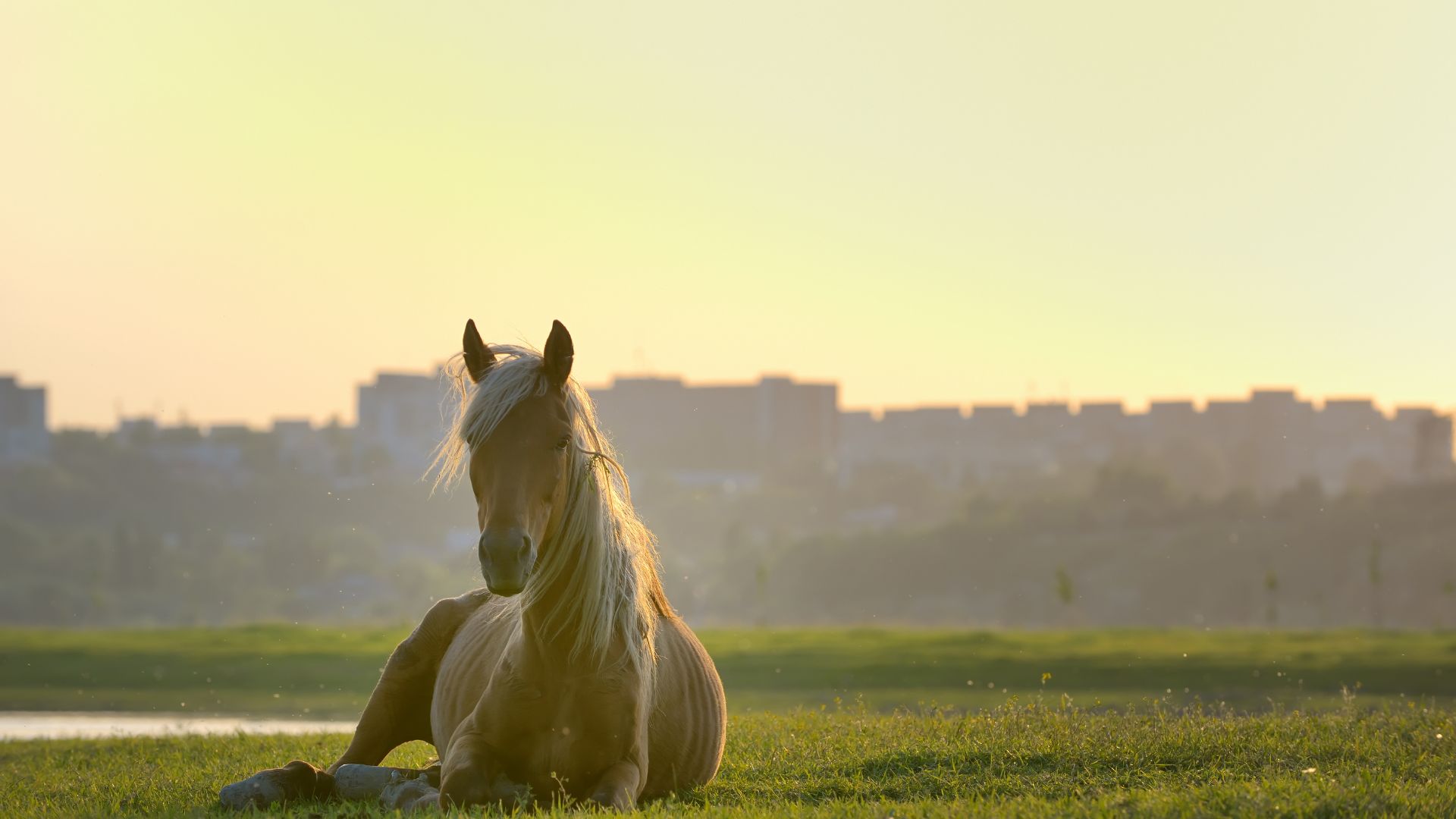
Wrapping up this section, lameness, increased digital pulse rate, shifts in posture, hot hoofs, a bloody or damaged sole, horse hoof ring-growth change, and an unwillingness to walk are 7 common symptoms of laminitis in horses. Although there are many other symptoms and signs of laminitis in horses, hopefully, the above 7 symptoms give you an idea of how to look for horse laminitis. A great place to read more about symptoms of laminitis in horses is by reading this article from Performance Equine.
Here’s a quick recap.
| Symptoms | Description |
| Lameness | Horse will limp, especially when performing sharp turns. |
| Increased Digital Pulse Rate | Lack of blood flow, causing stronger and increased digital pulse rate |
| Shifts in Posture | Shifting positions to alleviate pain on hooves |
| Hot Hoofs | Increased blood flow due to pain in hoof, resulting in hot hoofs |
| Sole Injury | Bloody or damaged white line; separation of toe and white line in sole |
| Hoof Ring Change | Reverse ring growth |
| Unwillingness to Walk | Horse wants to rest/lie down at unusual times during the day. |
What Triggers/Causes Laminitis in Horses?
Here are 13 causes of laminitis in horses:
- Overeating
- Excess grain intake/sudden dietary intake (carbs overload)
- Too much lush foraging
- Stress
- Retained placenta
- Black walnut shaving exposure
- Diarrhea
- Specific kinds of colic
- Extreme pneumonia
- Release of toxins internally
- Illnesses that result in metabolic disturbances
- Constant walking/working on hard surfaces (road founder)
- Too much or extended Corticosteroid use
How To Prevent Laminitis In Horses?
Seeing your horse experience laminitis symptoms is not fun. That’s why we’ve compiled this list of ways to prevent laminitis in horses.
| Laminitis Prevention Methods | Description |
| Correct feeding & acid build-up reduction | Give your horse a balanced diet, e.g. not excess sugars and grains |
| Be proactive in identifying laminitis | Know the signs of laminitis in horses (see above) |
| Restrict lush pasture exposure | Too much lush pasture intake results in excess sugar in your horse, which may result in laminitis |
| Keep your horse at a healthy weight | Bring your horse to a healthy weight if your horse is overweight. |
| No excess starch (grains, grasses) | Excess starch results in inflammation, which can lead to laminitis. |
| No sudden dietary change | If dietary changes are necessary, make those changes slowly. |
| Keep horse away from black walnut shavings bedding | A 20% or more black walnut shaving presence in horse bedding can be dangerous. |
| Secondary disease awareness | When assessing other horse diseases or sicknesses, be looking for laminitis symptoms as well. |
| Injury Awareness | An abnormal, excess amount of weight on a horse’s foot can cause laminitis. In the case of a leg injury, protect your horse from applying all of its weight on its “good” leg. |
| Farmco HF Series Slow Feeder | A Farmco HF Series slow feeder can help reduce/prevent stress, overeating, lush grass consumption, colic, excess grain intake, etc. |
Farmco HF Series Slow Feeder
To wrap up this section on how to prevent symptoms of laminitis in horses, we’ll talk a bit about Farmco’s HF Series slow feeder. Built to last for decades, this slow feeder usually pays itself off in about 24 months through hay savings. From that point on, you’ve got a free, premium-quality feeder plus thousands of dollars in hay savings for years to come.
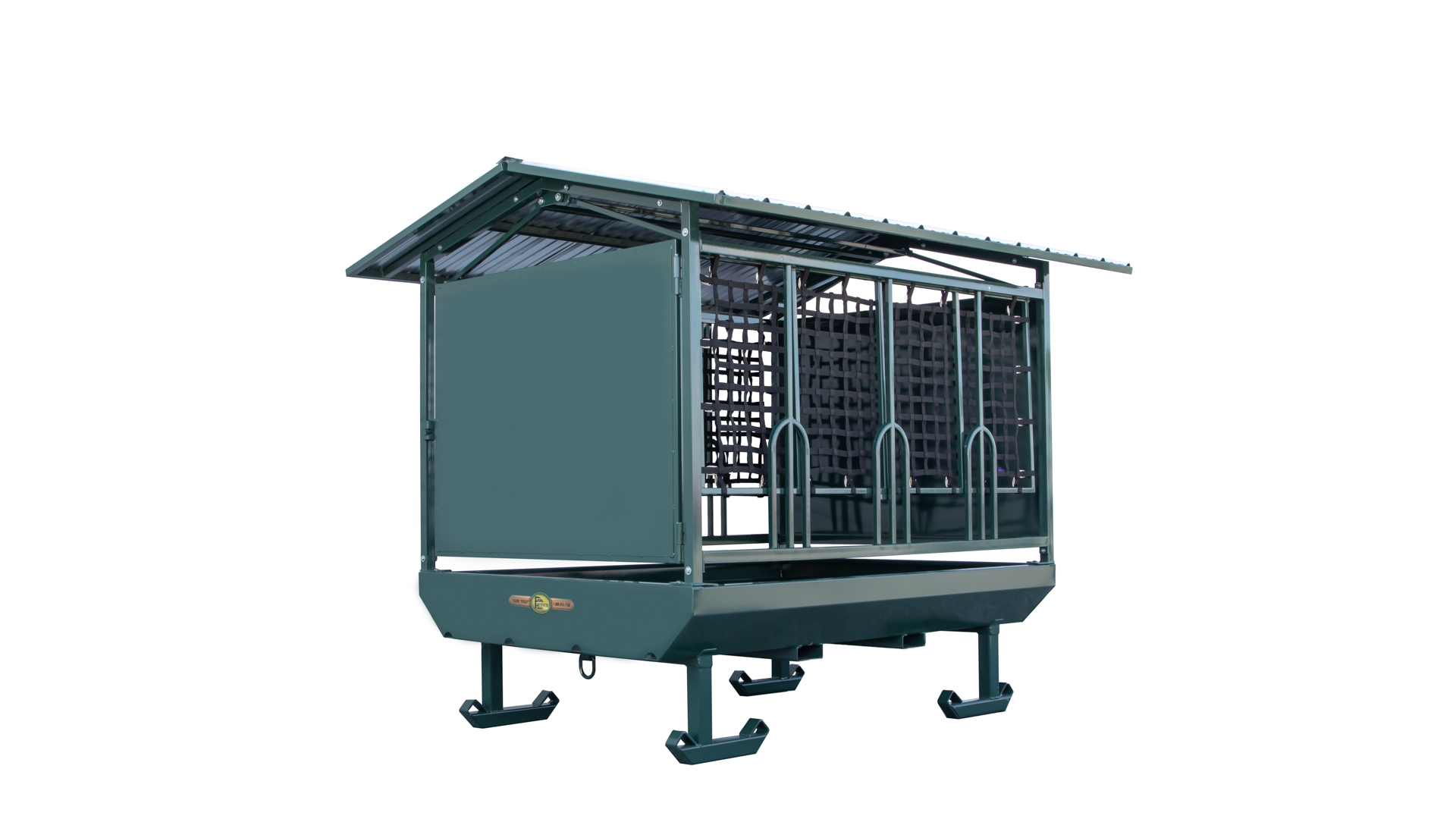
Anyway, in regards to helping keep signs of laminitis in horses at bay, the Farmco HF Series slow feeder helps in at least 5 ways.
1. Stress
Stress is one way that laminitis can develop in a horse. A horse’s stress levels can often be linked to eating habits/mealtime schedules. Giving a horse set mealtimes can often result in stress for your horse since naturally they are used to having access to natural foraging 24/7. So, when that “set” mealtime finally comes around, a horse may think that it needs to gorge itself on hay or else starve. Of course, this can result in overeating and stress for a horse.
A slow feeder reduces stress by allowing a horse to have access to food 24/7, thus replicating natural foraging, but also not allowing for overeating through “slow-feeding”.
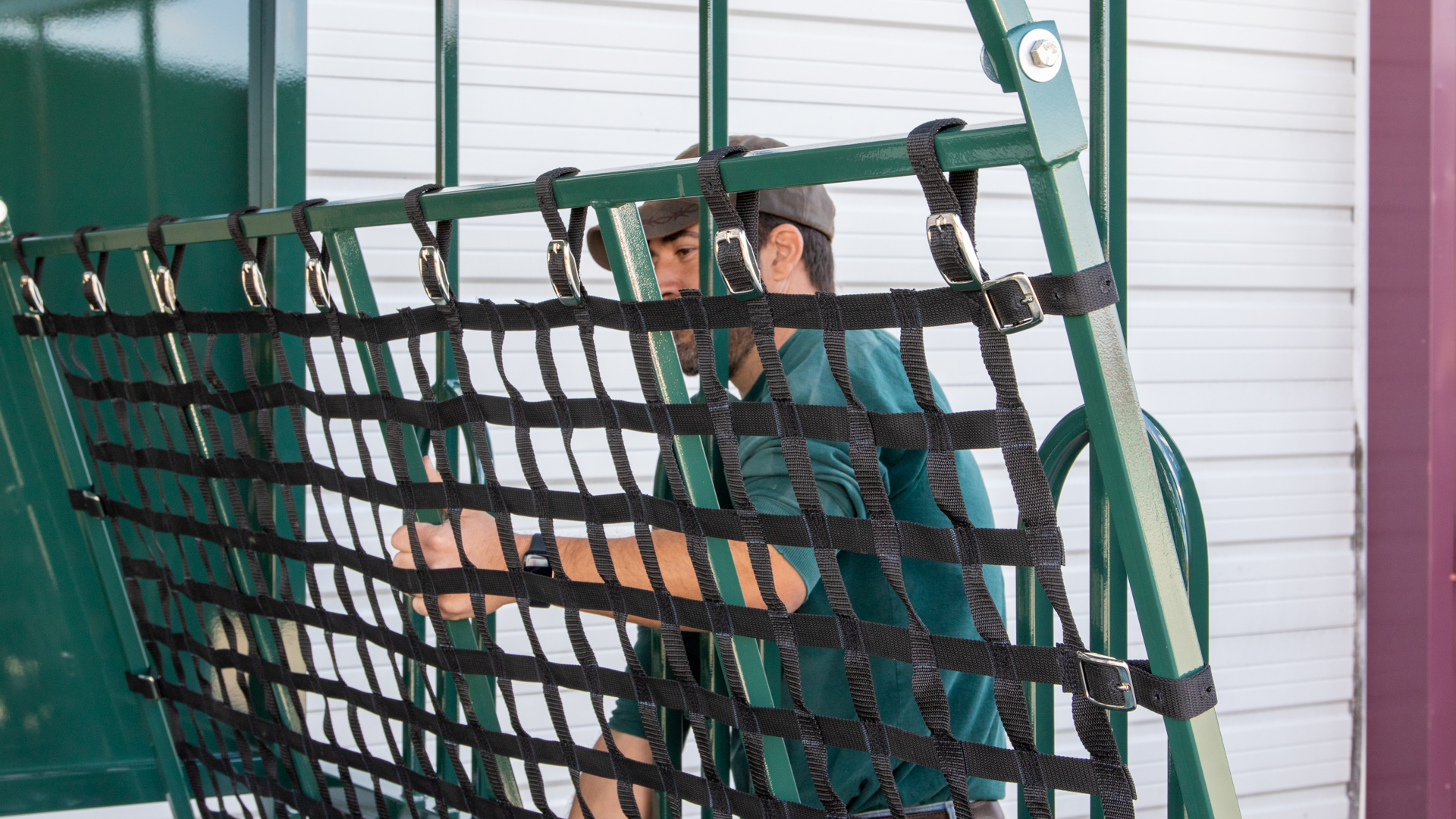
2. Overeating
As we mentioned above, a slow feeder reduces overeating by providing constant access to hay. Although paradoxical, access to hay 24/7 via “slow-feeding”, allows a horse to relax and not stress, knowing they have access to grub whenever they want; this way they don’t gorge themselves at “set” meal times.
3. Say “No” To Constant Lush Grass Access
Although lush grass is not necessarily bad for your horse in moderation, keeping a hay feeder with hay available for your horse could be a great alternative to allowing your horse constantly eat high-carb, lush grass.
4. Colic Prevention
Specific types of colic can cause laminitis. A Farmco slow feeder can help prevent colic. So, a Farmco slow feeder can indirectly help prevent laminitis by helping to prevent horse colic.
5. Excess Grain Intake
By providing fresh hay via a hay slow feeder, you can reduce feeding your horse excess grain and other high-carb meals. Some grain is good for a horse but not in excess.
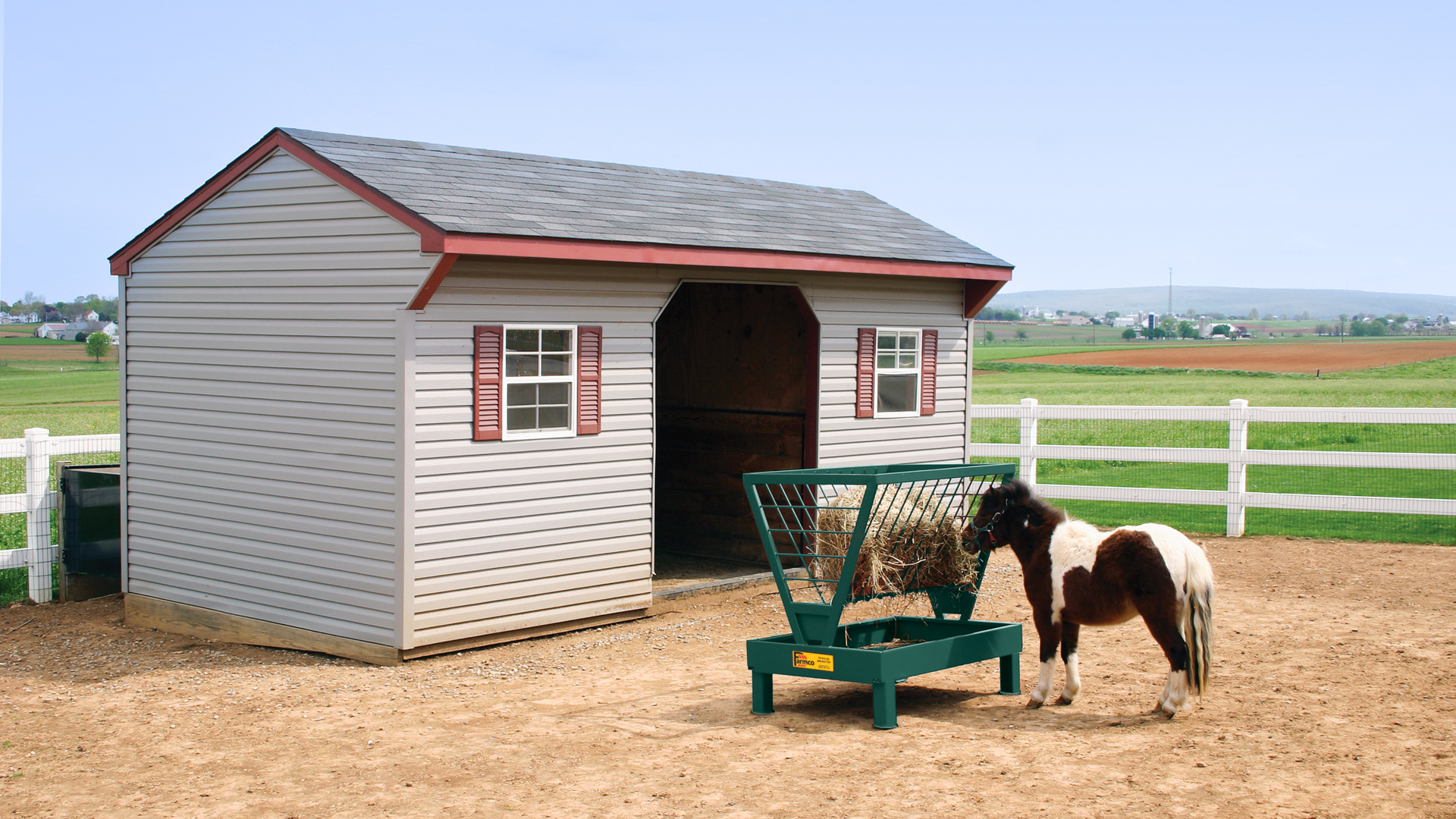
A Brief Recap…
Awareness of the symptoms of laminitis in horses is essential to any equine owner. We hope this article was able to bring you to a greater awareness of the symptoms, causes, and preventative measures for laminitis in horses. We also talked about how a Farmco HF Series slow feeder can help prevent horse laminitis. You can learn more about our Farmco HF Series slow feeder or request a quote on one below! At Farmco Manufacturing, we would love to serve you!
A happy, healthy horse is better than a sick one!





